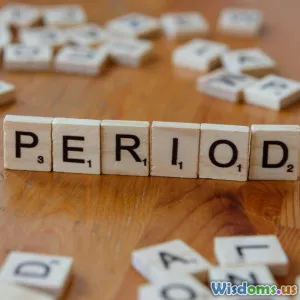
Navigating Language Learning Apps: A Guide
7 min read Master the world of language apps with this comprehensive guide to choosing, using, and succeeding in your language learning journey. (0 Reviews)
Navigating Language Learning Apps: A Guide
Introduction
In today's digital age, learning a new language has never been more accessible—or more complex. Language learning apps have flooded the market, promising fluency, convenience, and speedy progress. But amidst the hundreds of options, how can learners pick the right tool? How do these apps fit into a broader learning strategy? This guide dives deep into the world of language learning apps, empowering you to choose wisely and optimize your learning journey.
Language development is a dynamic process, and leveraging the right digital aids can accelerate your progress and keep you motivated. From gamified vocab builders to immersive conversation platforms, apps vary widely—not just in content but also in philosophy and approach. We'll explore key features, review popular options, and offer actionable tips to make these digital companions truly work for you.
Understanding the Landscape: Types of Language Learning Apps
The diversity of language apps caters to different learning styles and goals. Recognizing their types can help align your choice with your objectives.
1. Vocabulary Builders
Apps like Anki and Memrise focus heavily on spaced repetition systems (SRS), helping learners efficiently memorize and retain vocabulary. For example, Anki allows customization with community-made flashcard decks, perfect for learners looking to deepen specific vocabulary areas.
Real-world insight: Research from the Journal of Applied Linguistics shows SRS can increase long-term vocabulary retention by up to 60% compared to standard review methods.
2. Comprehensive Language Ecosystems
Platforms such as Duolingo and Babbel incorporate a bundle of skills—reading, writing, listening, and speaking—often embedding gamification to maintain engagement. Duolingo, with over 500 million downloads, leverages bite-sized lessons that learners can easily fit into daily routines.
3. Conversation and Immersion Apps
To build fluency, apps like HelloTalk or Tandem connect users with native speakers worldwide, facilitating authentic communication through text, voice, and video chats.
Example: A survey by Language Magazine indicates learners using such exchange apps see a significant increase in speaking confidence within three months.
4. Specialized Skill Trainers
Some apps focus on narrow skill areas—such as Pimsleur for audio-based oral skills and Clozemaster focused on contextual sentence training.
Decoding Key Features: What to Look for When Choosing
Choosing an app isn't just about popularity; understanding key features ensures alignment with your learning preferences.
User Interface and Accessibility
Is the app intuitive and easy to navigate? Clean UI reduces frustration, especially when juggling learning with other life commitments. Apps like Babbel receive praise for their straightforward layout, which helps sustain user motivation.
Personalization and Adaptivity
Effective apps adapt content based on your proficiency and progress. For instance, Lingvist employs AI algorithms tailored to your learning speed and strengths, enhancing efficiency.
Engaging Content and Gamification
Gamified elements—points, streaks, leaderboards—boost motivation. Duolingo's daily streak system is a classic reminder of how engaging devices can promote habit formation.
Offline Capability
Traveling or limited internet access demands apps that support offline use. Memrise and Anki offer offline modes, benefiting commuters or learners in low-connectivity areas.
Community and Support
Learning thrives on connection. Apps like Tandem and HelloTalk boast active communities for practice and cultural exchange, nurturing learner confidence.
Making the Most of Your Language App
Owning the best app isn’t enough—how you integrate it matters.
Set Clear, Realistic Goals
Use SMART goals (Specific, Measurable, Achievable, Relevant, Time-bound). For example, "Learn 30 new French words in two weeks using Anki decks" is a focused, trackable target.
Daily Consistency Over Intensity
Short, daily sessions outperform sporadic marathons. Even 15 minutes daily—as endorsed by language experts—ensures steady cumulative learning.
Blend Apps with Real-World Practice
An app cannot replace human interaction. Mix learning apps with speaking practice via language exchange or tutors. For example, pairing Babbel lessons with HelloTalk conversations cements knowledge.
Track Progress and Review Regularly
Many apps offer stats to monitor progress. Review challenging areas consistently, adapting focus as you advance.
Avoid Over-Reliance
Apps are tools—not miracles. Complement app use with books, podcasts, and media in your target language to develop holistic skills.
Case Study: Combining Apps for Optimal Results
Let’s consider Ana, a Spanish learner aiming for conversational fluency in 6 months.
- Morning: Uses Duolingo to warm up with grammar and vocabulary.
- Afternoon: Practices speaking with native speakers on HelloTalk.
- Evening: Reviews tricky words on Anki with spaced repetition.
This layered approach meets diverse learning needs—structures, conversations, and memorization—leading to consistent progress and maintained motivation.
Conclusion
The explosion of language learning apps is a blessing and a challenge. The key lies in discerning which tool fits your unique learning style, goals, and lifestyle. Beyond selecting apps with great features, your commitment, diverse practice, and realistic goal-setting are paramount.
To truly master a language, integrate apps thoughtfully into a well-rounded study plan. Harness their strengths—be it gamification, immersion, or spaced repetition—and enrich it with real-world practice. With the right navigation, language learning apps can transform an intimidating journey into an exciting adventure of discovery and growth.
Embark on your language learning odyssey equipped with this guide, and watch your skills soar.
Ready to start? Download a free app today, set a small goal, and take your first confident step towards fluency!
Rate the Post
User Reviews
Popular Posts



















